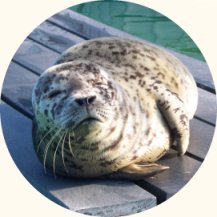
Study Design
2.1 Study Design
2.2 Data Sources
2.3 Methodology

Study Design
2.1 Study Design
2.2 Data Sources
2.3 Methodology
2.1 Study Design
Criteria for choosing a Spatial Problem:
i) that concerns you
ii) for which data can be acquired
iii) about which discrete questions can be asked - and answered
iv) that is manageableAs mentioned in my introduction, the location of the new Seal Rehabilitation site is a concern for me since I plan on continuing to volunteer there. Data was available and acquired through sources listed in Data Sources below. The location is the question since the lease will be running out soon and they may have to start looking for a new location soon.
I designed the study to do both a MCE Weighted Linear Combination as well as an MCE Boolean Intersection analysis. I wanted to see how they would differ in results.
2.2 Data Sources
Since I was dealing with the GVRD, most of the data that I needed was located in the GVRD directory in the S Drive. All this data was already in IDRISI format so I could work right from that data. I used mainly the landuse, roads, people, and city files.
Although there was a DEM of the GVRD already in the S Drive, I needed one that was more detailed. Fortunately, another student in the class (Howard Kung) had this so I was able to borrow his (obtained from Land Data BC). Similarly, the bus route data in the S Drive was only for Vancouver and Burnaby so I borrowed Andrew Nip's Shape Files for all bus routes in the GVRD.
The criteria for the project was obtained in late August/early September when I spoke to Jeremy, head of the Marine Mammal Rescue and Rehabilitation Centre about what he was needing in a new site for next year. From this conversation (and my own knowledge of ideal conditions for a new site), I decided on all of the criteria.
2.3 Methodology
Cartographic Models:
Luckily, most of the data was from the S Drive so it was already compatible with each other (so it all just had to be reclassed, rasterized, overlayed, distance, fuzzy, or Boolean operations). The Transit data had to be imported from ArcView and that caused a few problems (discussed in Conclusions). The DEM was for a larger area than just the GVRD so that was reprojected to be compatible. I only had to digitize one point (the location of the Vancouver Aquarium) which was fortunate.
From all the data collected, I chose the following criteria:
- Landuse can only be: undeveloped, industrial, or transportation/utilities
- Must be close to salt water (within 200 meters)
- Slope has to be less than 5%
- Cannot be within 50 meters of where people live
- Distance to a road must be within 200 meters
- Distance from a bus route must be within 500 meters
- Should be close to the Vancouver Aquarium (located in Stanley Park)Each of these criteria are discussed in more detail in Spatial Analysis as the Weighted Linear Evaluation was done a little bit differently than the Boolean Intersection evaluation. The steps used to perform everything, including the MCE evaluations are listed in the cartographic models (one for Boolean and one for WLC)